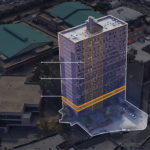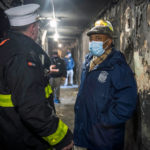 I have an article in the Winter issue of Life Safety Digest that discusses the importance of fire door assemblies and inspections in multifamily residential occupancies such as apartments and condominiums. Based on the average number of fires that occur annually in these buildings and the effects of non-compliant fire doors during past fires, I firmly believe that enforcing the annual requirements for fire door inspections will save lives.
I have an article in the Winter issue of Life Safety Digest that discusses the importance of fire door assemblies and inspections in multifamily residential occupancies such as apartments and condominiums. Based on the average number of fires that occur annually in these buildings and the effects of non-compliant fire doors during past fires, I firmly believe that enforcing the annual requirements for fire door inspections will save lives.
The Importance of Fire Door Assemblies in Residential Occupancies
It is not uncommon for fires to occur in multi-family residential buildings like apartments and condominiums. In October of 2021, the National Fire Protection Association (NFPA) published a report which estimated that 86,000 fires occurred in US apartment buildings in 2020 – this is an average of 236 apartment fires PER DAY. The majority of these fires resulted from five causes: cooking, heating, electrical distribution and lighting equipment, intentional fire setting, and smoking materials. The supporting documentation for the report includes tables demonstrating that the 86,000 fires caused 350 civilian deaths, 2,900 civilian injuries, and 1.6 billion dollars in property damage.
On January 9th, 2022, a fire occurred in a 19-story apartment building in the Bronx. Reports released to date have confirmed that the open door between the apartment and the corridor allowed the fire to spread after an electric space heater ignited a mattress. Only 3 minutes after the fire alarm was activated the fire department and other emergency services began to arrive, and they found residents throughout the building suffering from smoke inhalation. Seventeen people were killed, including eight children, and 44 people were injured.
Click here to continue reading…
Cover Image: Life Safety Digest
You need to login or register to bookmark/favorite this content.










Ten years or so ago I considered changing my professional focus from strictly architecture to include fire door inspections.
I talked to several local fire marshall offices and learned that they had chosen to not enforce the requirement for annual inspections, even though it had been part of the State’s laws for at least 5 years prior. “We don’t want to make more building owners upset with us” was the explanation.
So I decided to stick with architecture. When my projects include specifications, I do include text requiring a review of fire-rated openings as a task at substantial completion, and a report to the Owner.
When the folks who will end up having to put the wet stuff on the hot stuff aren’t willing to follow and enforce something this basic, the battle is lost at the start.
This has been a point of major frustration for me. I don’t know if you have read the report on the Minneapolis high-rise fire that occurred in November of 2019 (https://idighardware.com/2020/11/minneapolis-high-rise-fire-lessons-learned/), but the report states: “Had the door between the corridor and apartment been able to close, it is the SFMD’s opinion that the fire would have been contained to the apartment of origin and the loss of life would have been reduced and possibly only involved the occupant of that apartment.”
Even considering the effect of the non-code-compliant fire door on the number of fatalities, the requirement for annual fire door assembly inspection has been removed from the Minnesota State Fire Code. Thankfully, there are some states and local jurisdictions that are enforcing the requirements, choosing the safety of building occupants over whatever concerns they may have related to resources, administration, or making building owners upset.
– Lori